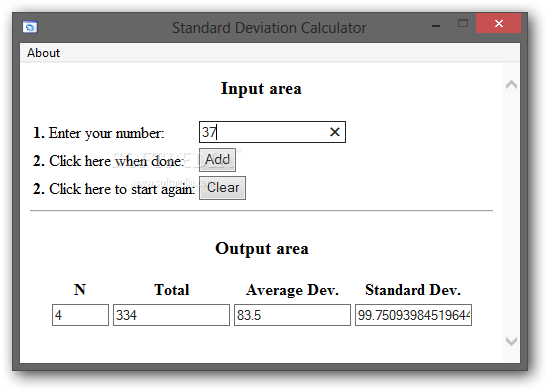

The reagent Coomassie brilliant blue turns blue when it binds to arginine and aromatic amino acids present in proteins, thus increasing the absorbance of the sample. The Bradford assay is a colorimetric assay that measures protein concentration.

The amount of protein in the second sample can be determined by comparison to a standard curve. The brown sample (lower absorbance) contains no protein, while the blue sample (higher absorbance) contains protein. The amount of light measured is the analytical signal. The detector converts the light produced by the sample into a voltage, which increases with intensity of light. For instance, chromium (III) might be measured using a chemiluminescence method, in an instrument that contains a photomultiplier tube (PMT) as the detector. Many different variables can be used as the analytical signal.

The analyte concentration ( x) of unknown samples may be calculated from this equation.

This yields a model described by the equation y = mx + y 0, where y is the instrument response, m represents the sensitivity, and y 0 is a constant that describes the background. The data - the concentrations of the analyte and the instrument response for each standard - can be fit to a straight line, using linear regression analysis. The mass of protein in a different sample is determined by determining where on the standard curve it should go - in this case, 30 milligrams. The operator can measure the response of the unknown and, using the calibration curve, can interpolate to find the concentration of analyte.Īn example of a standard curve showing the absorbance of different concentrations of protein (two trials for each measurement). concentration will show a linear relationship. For most analyses a plot of instrument response vs.
#Analytical standard calculator series
Analyzing each of these standards using the chosen technique will produce a series of measurements. The concentrations of the standards must lie within the working range of the technique (instrumentation) they are using. The operator prepares a series of standards across a range of concentrations near the expected concentration of analyte in the unknown. Such a curve is typically used when an instrument uses a sensor whose calibration varies from one sample to another, or changes with time or use if sensor output is consistent the instrument would be marked directly in terms of the measured unit. For example, a calibration curve can be made for a particular pressure transducer to determine applied pressure from transducer output (a voltage). In more general use, a calibration curve is a curve or table for a measuring instrument which measures some parameter indirectly, giving values for the desired quantity as a function of values of sensor output. The calibration curve is a plot of how the instrumental response, the so-called analytical signal, changes with the concentration of the analyte (the substance to be measured). A calibration curve is one approach to the problem of instrument calibration other standard approaches may mix the standard into the unknown, giving an internal standard. In analytical chemistry, a calibration curve, also known as a standard curve, is a general method for determining the concentration of a substance in an unknown sample by comparing the unknown to a set of standard samples of known concentration. \): Illustration showing three data points and two possible straight-lines that might explain the data.A calibration curve plot showing limit of detection (LOD), limit of quantification (LOQ), dynamic range, and limit of linearity (LOL).


 0 kommentar(er)
0 kommentar(er)
